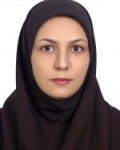| نویسندگان | ملیحه عباس زاده,وحید خسروی,امین بیرانوند پور |
|---|
| نشریه | Earth Science Informatics |
|---|
| ضریب تاثیر (IF) | 2.7 |
|---|
| نوع مقاله | Full Paper |
|---|
| تاریخ انتشار | 2024-08-23 |
|---|
| رتبه نشریه | علمی - پژوهشی |
|---|
| نوع نشریه | الکترونیکی |
|---|
| کشور محل چاپ | ایران |
|---|
| نمایه نشریه | SCOPUS ,JCR |
|---|
چکیده مقاله
approaches have been developed for this purpose, but most of them are computationally expensive and complex, particularly
when dealing with intricate mineralization systems and large datasets. Additionally, most of them require a timeconsuming
process for hyperparameter tuning. In this research, the application of the Learning Vector Quantization (LVQ)
classification algorithm has been proposed to address these challenges. The LVQ algorithm exhibits lower complexity and
computational costs compared to other machine learning algorithms. Various versions of LVQ, including LVQ1, LVQ2,
and LVQ3, have been implemented for geological domaining in the Darehzar porphyry copper deposit in southeastern
Iran. Their performance in geological domaining has been thoroughly investigated and compared with the Support Vector
Machine (SVM), a widely accepted classification method in implicit domaining. The overall classification accuracy
of LVQ1, LVQ2, LVQ3, and SVM is 90%, 90%, 91%, and 98%, respectively. Furthermore, the calculation time of these
algorithms has been compared. Although the overall accuracy of the SVM method is ∼ 7% higher, its calculation time
is ∼ 1000 times longer than LVQ methods. Therefore, LVQ emerges as a suitable alternative for geological domaining,
especially when dealing with large datasets.
